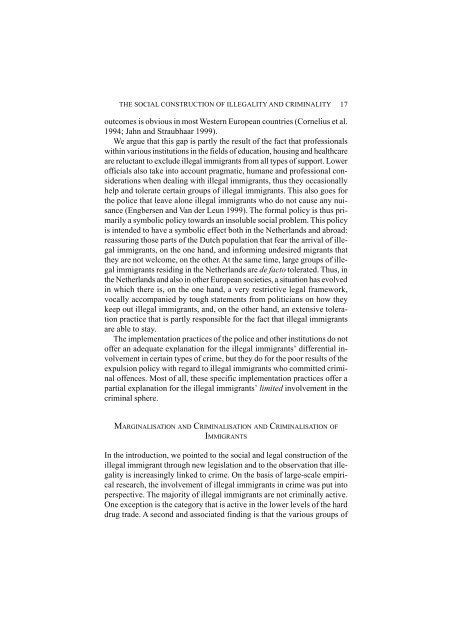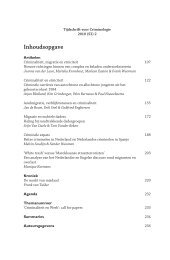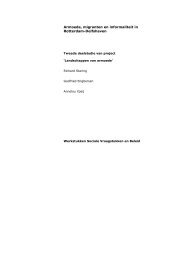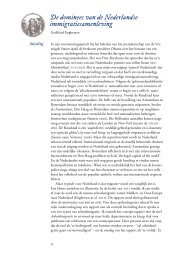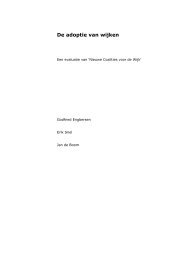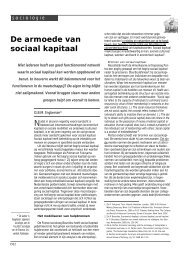THE SOCIAL CONSTRUCTION OF ILLEGALITY AND CRIMINALITY ...
THE SOCIAL CONSTRUCTION OF ILLEGALITY AND CRIMINALITY ...
THE SOCIAL CONSTRUCTION OF ILLEGALITY AND CRIMINALITY ...
Create successful ePaper yourself
Turn your PDF publications into a flip-book with our unique Google optimized e-Paper software.
<strong>THE</strong> <strong>SOCIAL</strong> <strong>CONSTRUCTION</strong> <strong>OF</strong> <strong>ILLEGALITY</strong> <strong>AND</strong> <strong>CRIMINALITY</strong> 17<br />
outcomes is obvious in most Western European countries (Cornelius et al.<br />
1994; Jahn and Straubhaar 1999).<br />
We argue that this gap is partly the result of the fact that professionals<br />
within various institutions in the fields of education, housing and healthcare<br />
are reluctant to exclude illegal immigrants from all types of support. Lower<br />
officials also take into account pragmatic, humane and professional considerations<br />
when dealing with illegal immigrants, thus they occasionally<br />
help and tolerate certain groups of illegal immigrants. This also goes for<br />
the police that leave alone illegal immigrants who do not cause any nuisance<br />
(Engbersen and Van der Leun 1999). The formal policy is thus primarily<br />
a symbolic policy towards an insoluble social problem. This policy<br />
is intended to have a symbolic effect both in the Netherlands and abroad:<br />
reassuring those parts of the Dutch population that fear the arrival of illegal<br />
immigrants, on the one hand, and informing undesired migrants that<br />
they are not welcome, on the other. At the same time, large groups of illegal<br />
immigrants residing in the Netherlands are de facto tolerated. Thus, in<br />
the Netherlands and also in other European societies, a situation has evolved<br />
in which there is, on the one hand, a very restrictive legal framework,<br />
vocally accompanied by tough statements from politicians on how they<br />
keep out illegal immigrants, and, on the other hand, an extensive toleration<br />
practice that is partly responsible for the fact that illegal immigrants<br />
are able to stay.<br />
The implementation practices of the police and other institutions do not<br />
offer an adequate explanation for the illegal immigrants’ differential involvement<br />
in certain types of crime, but they do for the poor results of the<br />
expulsion policy with regard to illegal immigrants who committed criminal<br />
offences. Most of all, these specific implementation practices offer a<br />
partial explanation for the illegal immigrants’ limited involvement in the<br />
criminal sphere.<br />
MARGINALISATION <strong>AND</strong> CRIMINALISATION <strong>AND</strong> CRIMINALISATION <strong>OF</strong><br />
IMMIGRANTS<br />
In the introduction, we pointed to the social and legal construction of the<br />
illegal immigrant through new legislation and to the observation that illegality<br />
is increasingly linked to crime. On the basis of large-scale empirical<br />
research, the involvement of illegal immigrants in crime was put into<br />
perspective. The majority of illegal immigrants are not criminally active.<br />
One exception is the category that is active in the lower levels of the hard<br />
drug trade. A second and associated finding is that the various groups of


